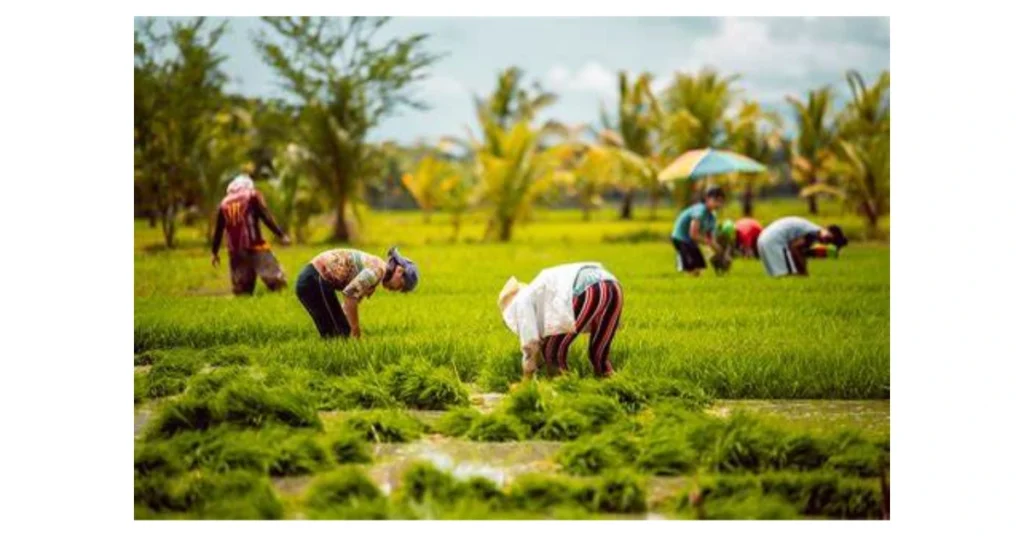Agriculture insurance is a crucial component of modern farming, designed to protect farmers from the financial risks associated with unpredictable and often harsh weather conditions, pest infestations, and other unforeseen events. In an industry where margins can be razor-thin and risks can be high, having the right insurance coverage can make a significant difference in a farmer’s ability to sustain and grow their business. This article explores the importance of agriculture insurance, the different types available, and how farmers can choose the best policy to meet their needs.

What is Agriculture Insurance?
Agriculture insurance refers to policies specifically tailored to safeguard farmers and their crops or livestock against various risks. These policies help mitigate losses from events such as droughts, floods, diseases, and accidents. By transferring some of the financial risks associated with farming to an insurance provider, farmers can focus more on their agricultural operations and less on the uncertainties that come with them.
Types of Agriculture Insurance
Agriculture insurance is designed to protect farmers and agricultural businesses from various risks that can impact their crops, livestock, and overall income. Here are the main types of agriculture insurance
1. Crop Insurance
Crop insurance is one of the most common types of agriculture insurance. It covers losses resulting from crop failures due to adverse weather conditions, pests, and diseases. There are two primary types of crop insurance:
- Actual Production History (APH) Insurance: This type provides coverage based on the average yield history of a farmer’s crops. If the actual yield falls below a predetermined level, the insurance pays out based on the difference.
- Revenue Insurance: This insurance offers protection against both yield losses and declines in market prices. It ensures that farmers receive a payment if their revenue falls below a set threshold, providing a more comprehensive safety net.
2. Livestock Insurance
Livestock insurance covers losses related to the health and well-being of farm animals. This type of insurance can be vital for farmers who rely heavily on livestock for their income. Key areas covered include:
- Health Insurance: Covers veterinary expenses and loss of income due to sickness or injury to the livestock.
- Mortality Insurance: Provides compensation in the event of the death of an insured animal due to disease, accidents, or natural causes.
3. Farm Property Insurance
Farm property insurance protects the physical assets of a farm, including buildings, machinery, and equipment. It covers damage from fire, theft, vandalism, and natural disasters. This type of insurance ensures that a farm can recover its infrastructure and continue operations even after significant losses.
Why Agriculture Insurance is Essential
Agriculture is inherently risky due to factors like climate variability, disease outbreaks, and market fluctuations. Here’s why having insurance is crucial:
1. Financial Protection
Insurance provides a safety net against unexpected losses, ensuring that farmers do not face insurmountable financial burdens. This protection helps maintain financial stability and supports recovery efforts after a loss.
2. Risk Management
By transferring the financial risks associated with farming to an insurance company, farmers can better manage and plan their operations. This approach allows them to focus on improving productivity and efficiency rather than worrying about potential losses.
3. Access to Financing
Many financial institutions require insurance coverage as a prerequisite for providing loans or other forms of credit. Having adequate insurance can, therefore, enhance a farmer’s ability to secure financing for expansion, equipment, or other investments.
Choosing the Right Agriculture Insurance Policy
Selecting the right insurance policy can be complex due to the variety of options available. Here are some key considerations for farmers:
1. Assess Your Needs
Determine the specific risks your farm faces and the type of coverage that best addresses those risks. Evaluate factors such as crop types, livestock breeds, and regional climate conditions to choose the most suitable insurance policies.
2. Compare Policies
Compare different insurance policies and providers to find the best coverage and value. Look for policies that offer comprehensive coverage, reasonable premiums, and reliable claims support.
3. Understand Policy Terms
Carefully review the terms and conditions of each policy, including coverage limits, exclusions, and the claims process. Ensure that you fully understand what is covered and any potential gaps in coverage.
4. Consult with Experts
Seek advice from insurance professionals or agricultural consultants who can provide guidance on the best insurance options for your specific situation. Their expertise can help you make informed decisions and optimize your coverage.
Conclusion
Agriculture insurance plays a vital role in protecting farmers from the financial uncertainties inherent in farming. By understanding the different types of insurance available and carefully selecting the right policies, farmers can safeguard their livelihoods and ensure the sustainability of their operations. Investing in agriculture insurance not only provides financial security but also contributes to effective risk management and recovery planning, ultimately supporting the long-term success of farming enterprises.